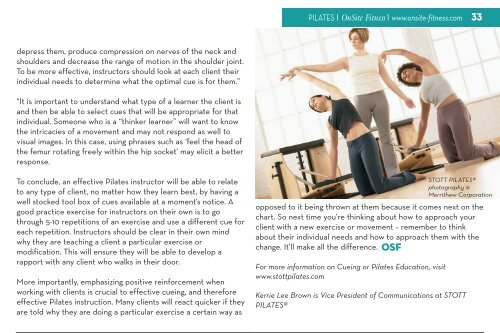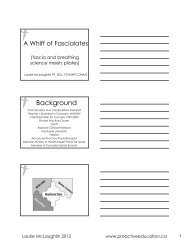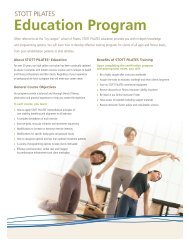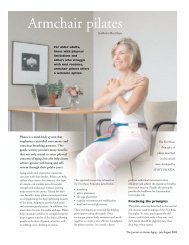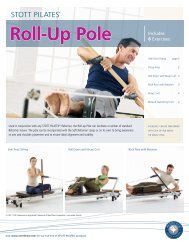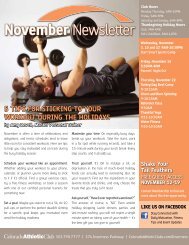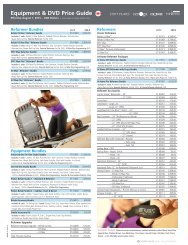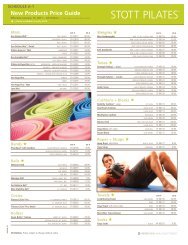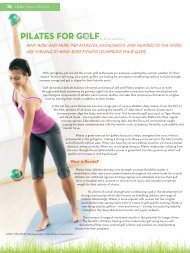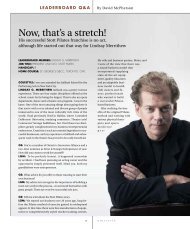CUEING FOR PILATES - Merrithew.com
CUEING FOR PILATES - Merrithew.com
CUEING FOR PILATES - Merrithew.com
You also want an ePaper? Increase the reach of your titles
YUMPU automatically turns print PDFs into web optimized ePapers that Google loves.
<strong>PILATES</strong> | OnSite Fitness | www.onsite-fitness.<strong>com</strong> 33<br />
depress them, produce <strong>com</strong>pression on nerves of the neck and<br />
shoulders and decrease the range of motion in the shoulder joint.<br />
To be more effective, instructors should look at each client their<br />
individual needs to determine what the optimal cue is for them.”<br />
“It is important to understand what type of a learner the client is<br />
and then be able to select cues that will be appropriate for that<br />
individual. Someone who is a “thinker learner” will want to know<br />
the intricacies of a movement and may not respond as well to<br />
visual images. In this case, using phrases such as ‘feel the head of<br />
the femur rotating freely within the hip socket’ may elicit a better<br />
response.<br />
To conclude, an effective Pilates instructor will be able to relate<br />
to any type of client, no matter how they learn best, by having a<br />
well stocked tool box of cues available at a moment’s notice. A<br />
good practice exercise for instructors on their own is to go<br />
through 5-10 repetitions of an exercise and use a different cue for<br />
each repetition. Instructors should be clear in their own mind<br />
why they are teaching a client a particular exercise or<br />
modification. This will ensure they will be able to develop a<br />
rapport with any client who walks in their door.<br />
More importantly, emphasizing positive reinforcement when<br />
working with clients is crucial to effective cueing, and therefore<br />
effective Pilates instruction. Many clients will react quicker if they<br />
are told why they are doing a particular exercise a certain way as<br />
opposed to it being thrown at them because it <strong>com</strong>es next on the<br />
chart. So next time you’re thinking about how to approach your<br />
client with a new exercise or movement – remember to think<br />
about their individual needs and how to approach them with the<br />
change. It’ll make all the difference.<br />
OSF<br />
For more information on Cueing or Pilates Education, visit<br />
www.stottpilates.<strong>com</strong><br />
STOTT <strong>PILATES</strong>®<br />
photography ©<br />
<strong>Merrithew</strong> Corporation<br />
Kerrie Lee Brown is Vice President of Communications at STOTT<br />
<strong>PILATES</strong>®


